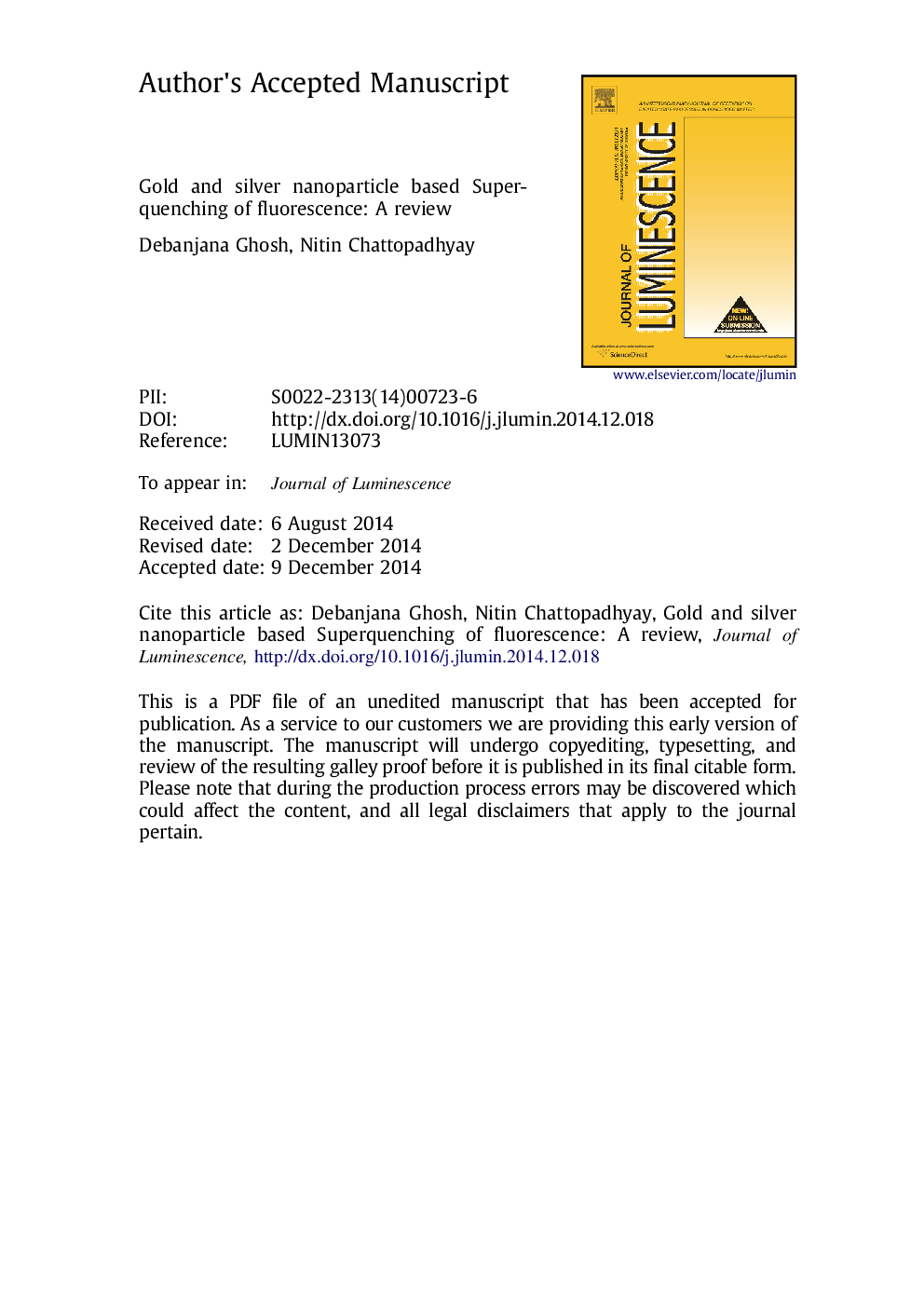| Article ID | Journal | Published Year | Pages | File Type |
|---|---|---|---|---|
| 5399375 | Journal of Luminescence | 2015 | 41 Pages |
Abstract
The short review highlights the recent advances on the gold and silver nanoparticles induced efficient quenching of fluorescence from various fluorophores looking at their promising use as optical rulers and chemo-/bio- sensors. The fluorescence quenching often leads to the increase in the Stern-Volmer constant (KSV~107-1010Â molâ1Â dm3) several orders of magnitude higher than the values observed for the normal photochemical quenching processes (~102Â molâ1Â dm3). This amplified quenching has been termed as “super-quenching” or “hyper-quenching”. Energy transfer (ET) is established from the donor to the metal nanoparticles rationalizing these fast quenching processes. Considering the distance dependence of the ET process, Förster resonance energy transfer (FRET) and nanometal surface energy transfer (NSET) are ascribed to take place. These sensitive distance dependent phenomena serve as the spectroscopic ruler to measure the intra- or intermolecular distances between the interacting partners. In this account focus has been laid on the size dependent energy transfer and super- and hyper- quenching of the fluorescence of the donor moieties by the nanometals and their probable applications in sensing. Rationalization has been made for the nanoparticle induced huge enhancement in the quenching efficiency. The impact of this review lies in the possible application of these amplified quenching processes in designing high sensitive chemical and biological sensors.
Related Topics
Physical Sciences and Engineering
Chemistry
Physical and Theoretical Chemistry
Authors
Debanjana Ghosh, Nitin Chattopadhyay,
